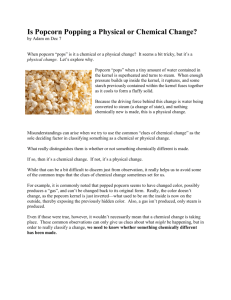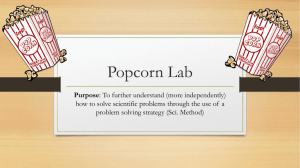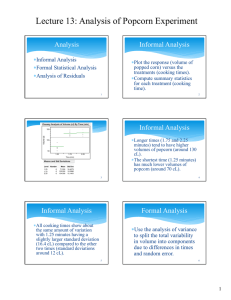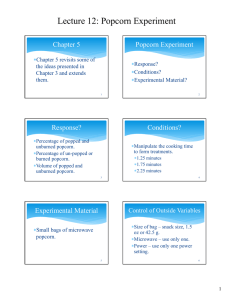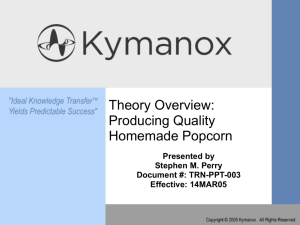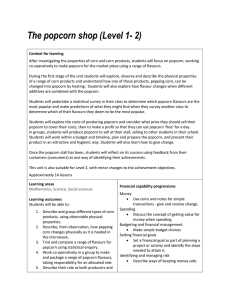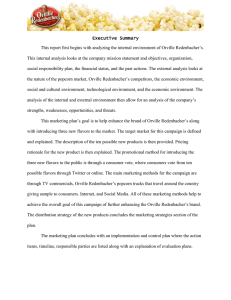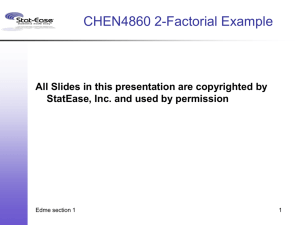The Ins and Outs of a Multicultural Library Orientation Session
advertisement
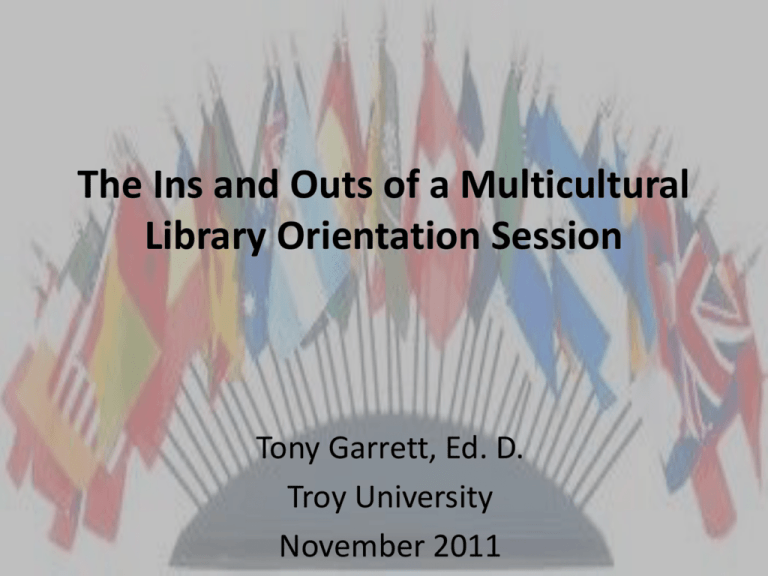
The Ins and Outs of a Multicultural Library Orientation Session Tony Garrett, Ed. D. Troy University November 2011 Agenda • • • • • • • • Questions to Ponder Popcorn Discussion Considerations Communication Improvement Library Technology Collaboration Summarization Q&A Questions to Ponder • Do you notice some international students appear to be lost when presenting information during a library instruction session? • While working at the reference desk, do you notice international students do not seem to understand the instructions given? • What have you done about it or plan to do? Popcorn Discussion • Let’s popcorn issues you have seen in dealing with international students during library instruction sessions. • Let’s popcorn issues you have seen in dealing with international students while working with them at the reference desk (both physically and virtually). Considerations • These students have traveled great distances and left family and friends to study at your school. • All will suffer culture shock at various times while in your institution? Have you experienced this – rather in a different country or different part of the U.S.? • Many of these students would much rather ask friends for information than a librarian. Considerations • Many of your students will have varying attitudes towards the status of librarians as well as towards female librarians. • The idea of doing library research may be new and developing good library skills may seem irrelevant to them. • Most of these students would benefit from hands-on practice in your library instruction programs. Considerations • Librarians need to assess audiences immediately. • English skills can be easily taught in library activities. • Language barrier makes it difficult to keep up with lectures or group activities. • They hesitate to ask questions or take part in discussions for fear they may appear unintelligent. Considerations • They have problems locating resources and services in the library, chiefly because they are not always aware that those resources and services are available. They also may not be familiar with the layout of the library. • They sometimes have problem with terminology. They do not know what to ask for because they do not know what the object, concept, service or resource is called. Considerations • The U. S. system is unfamiliar. Many students admit they have done little or no library research, or have had to use no resource other than their textbooks and class notes and lectures. • They are responsive to instruction-in social and communication skills which will improve their interaction with library staff. Considerations • They want to learn about the library early in the term, sometimes before they know they have a library assignment. • They will return for assistance when they have specific assignments. • Many international students want to take notes while on tour or during consultations and library instruction sessions. Considerations • They are very responsive to lectures, seminars, or workshops sponsored by the Office of International Student Affairs and the library. • More international students return to say “thank you” than any other group of students. • These students come from a variety of different backgrounds and may not understand our style of presentation. Considerations • Usually one thorough walk through the library will familiarize them with its layout. • These students come from a variety of different backgrounds and may not understand vocabulary of the presentation and/or the examples used in the presentation. Communication Improvement • Avoid using complex sentence structure and vocabulary. • Define and repeat important words or concepts. Use synonyms for difficult words to help explain their meanings. • Avoid using library jargon unless absolutely necessary. • Avoid using slang, allusion, metaphor, jokes, and unfamiliar references. Communication Improvement • Check often for comprehension. The presenter should maintain eye contact and question students directly about points which have been covered. • Use visual aids such as PowerPoint slides and handouts to make the presentation more effective. Students in general will often learn more quickly with exposure to visual aids. This is especially true of international students, many of whom come from cultures where learning takes place through observation and emulation. Library Terminology • These resources can be in the native language only or dual language (native and English). – Handouts – Pathfinders – Libguides – Virtual/Physical Tours – Etc. Collaboration • International student coffee house • Get involved in international student organizations • International student committees and associations • Work with ESL department • International festivals and holidays • Multiculturalism Week Collaboration • Do an international translation of short stories and poetry presentation with international students • International book club • International coffee tasting • ESL clubs • Cultural Awareness Day • Fulbright Scholar, if have it on campus Collaboration • International faculty expertise to assist with ideas about various cultures • Displays of international events, holidays, customs and costumes in library • International classics as part of the regular library collection • Activities associated with International Education Week – November 12 – 16, 2011 – http://iew.state.gov/ Collaboration • Institute of International Education’s Open Doors Report • ACRL International Student Interest Group • NAFSA (National Association of Foreign Student Advisers) – Association of International Education • Institute of International Education • International Relations Roundtable (IRRT) of the American Library Association • ALA – World • International Federation of Library Association Summarization Q&A




